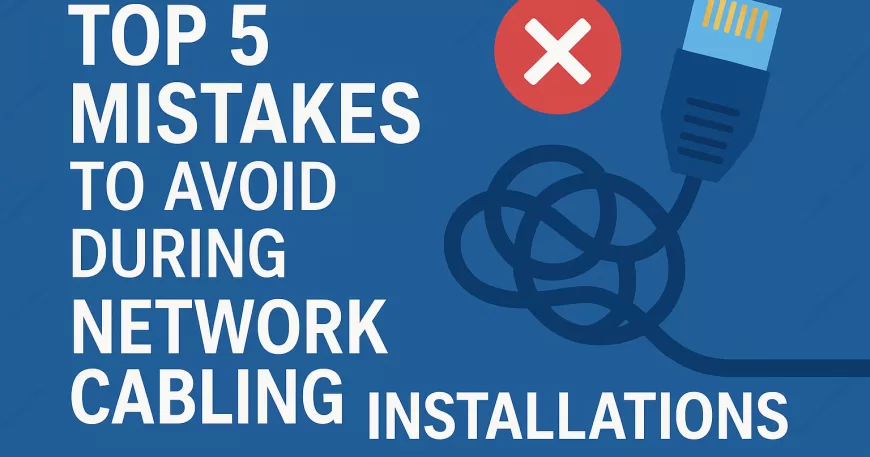Setting up a reliable and future-proof network infrastructure starts with one of the most basic yet critical elements: network cabling. Despite advancements in wireless technology, physical cabling remains the backbone of any office or data center network. However, many businesses still make avoidable mistakes during the installation process, leading to performance issues, high maintenance costs, and even network failures.
At Smart Data Information Technology, we’ve seen firsthand how cutting corners during cabling can cost businesses more in the long run. Here are the top five mistakes to avoid:
1. Poor Planning and Lack of Future Scalability
One of the most common mistakes is not planning for future growth. Installing just enough cabling for current needs can be short-sighted, especially as your team grows or bandwidth requirements increase.
Tip: Always install extra conduit, cables, and patch panels to accommodate future expansion. Choose high-quality Cat6 or fiber cables for long-term speed and reliability.
2. Ignoring Cable Management Standards
A messy cable setup not only looks unprofessional but can also make troubleshooting a nightmare. Bundled, unlabelled cables increase downtime and maintenance complexity.
Tip: Follow structured cabling standards and use proper cable trays, labels, color codes, and Velcro ties to keep things tidy and accessible.
3. Using Low-Quality or Incompatible Materials
Trying to save costs by using cheap cables or connectors often leads to poor signal quality, data loss, and overheating.
Tip: Use certified cabling materials from reputable brands, and always match the cable type to your network speed and usage needs (e.g., Cat6 for Gigabit Ethernet or fiber for long distances).
4. Running Cables Near Electrical Lines
Installing network cables too close to power lines or electrical equipment can lead to electromagnetic interference (EMI), resulting in reduced data transmission quality.
Tip: Always maintain proper separation between power and data cables, and use shielded cables if the environment has high electrical interference.
5. Skipping Testing and Certification
Some installers skip proper testing after installation, assuming everything works fine. This can lead to undetected faults or performance issues down the line.
Tip: Always test every cable run using network cable testers and certify them according to industry standards (like TIA/EIA). It ensures everything is performing as expected and prevents surprises later.
Final Thoughts:
A successful cabling installation is about more than just laying wires—it’s about creating a foundation for performance, scalability, and reliability. Avoiding these five mistakes will help you build a network infrastructure that supports your business long-term.
Need professional help with your cabling project? Smart Data Information Technology offers structured cabling services across Dubai, Sharjah, Oman, Iraq, and Germany. Let us help you do it right the first time.




